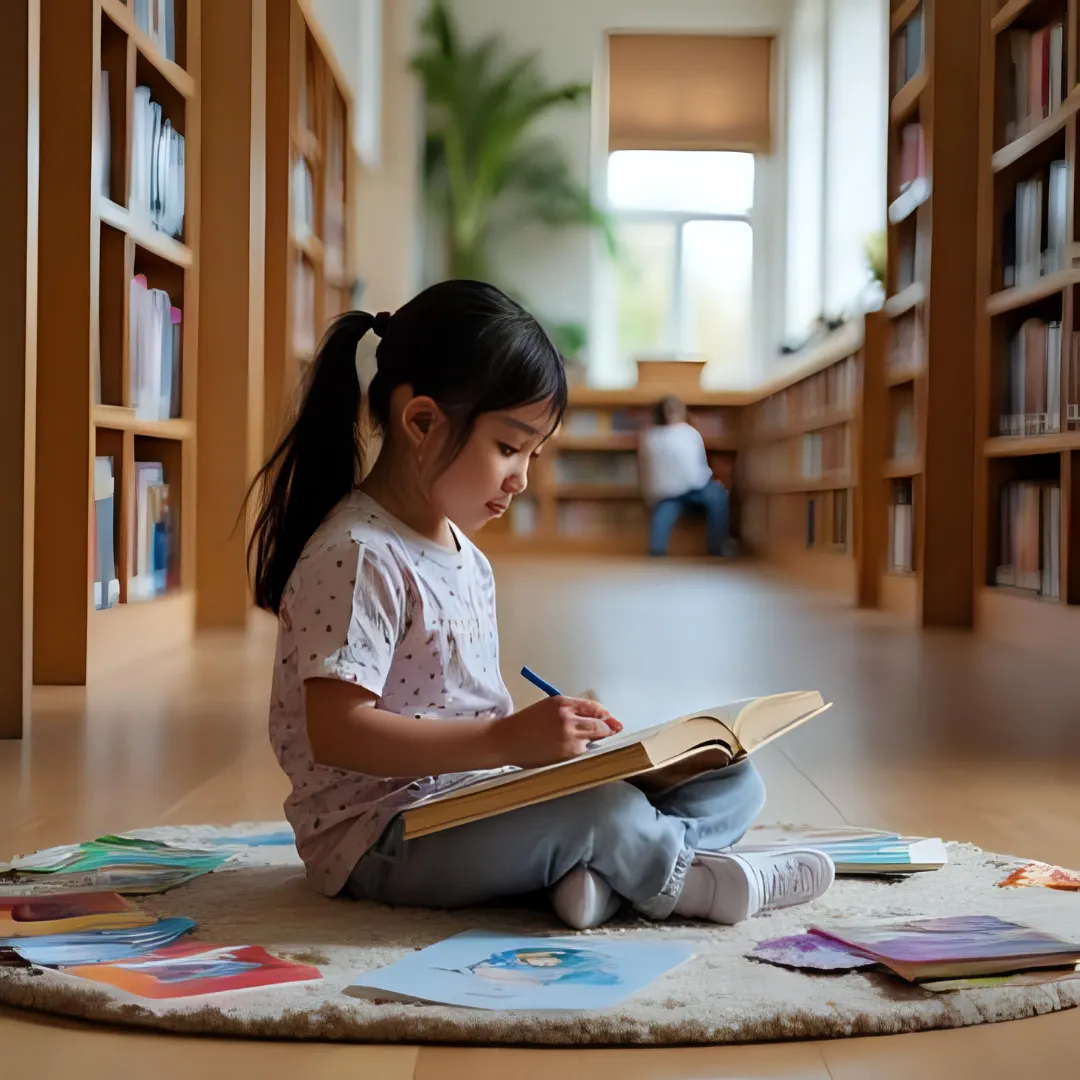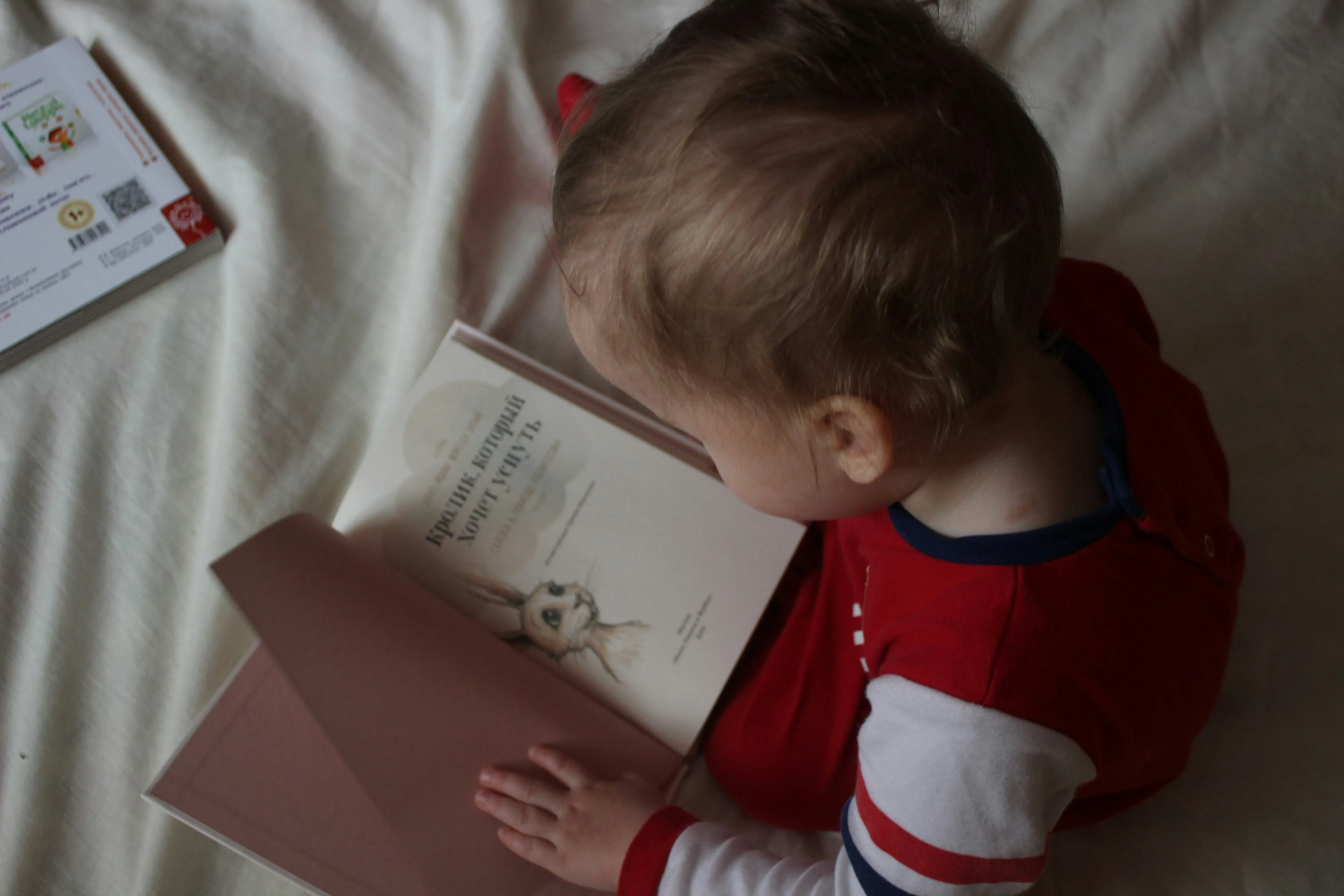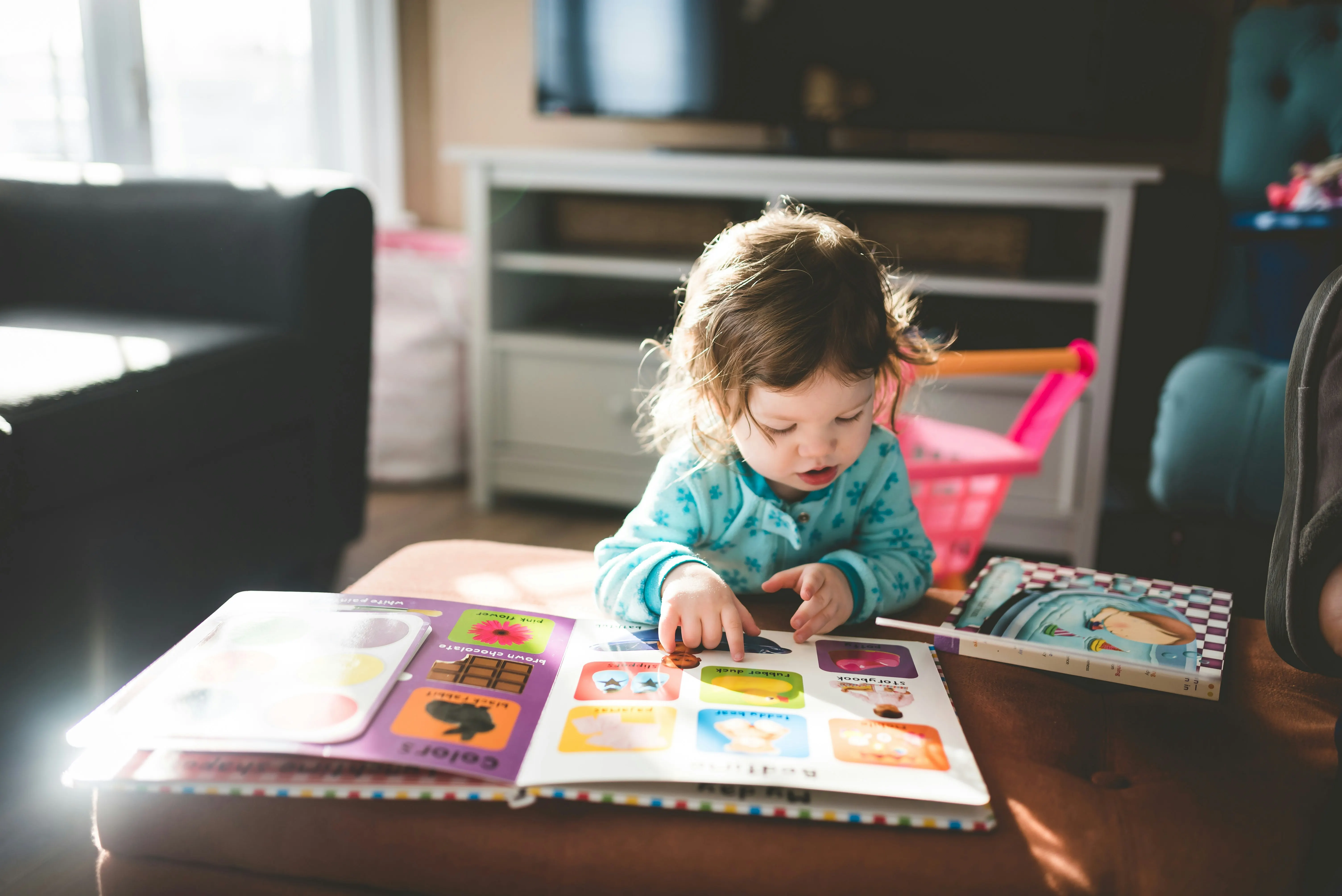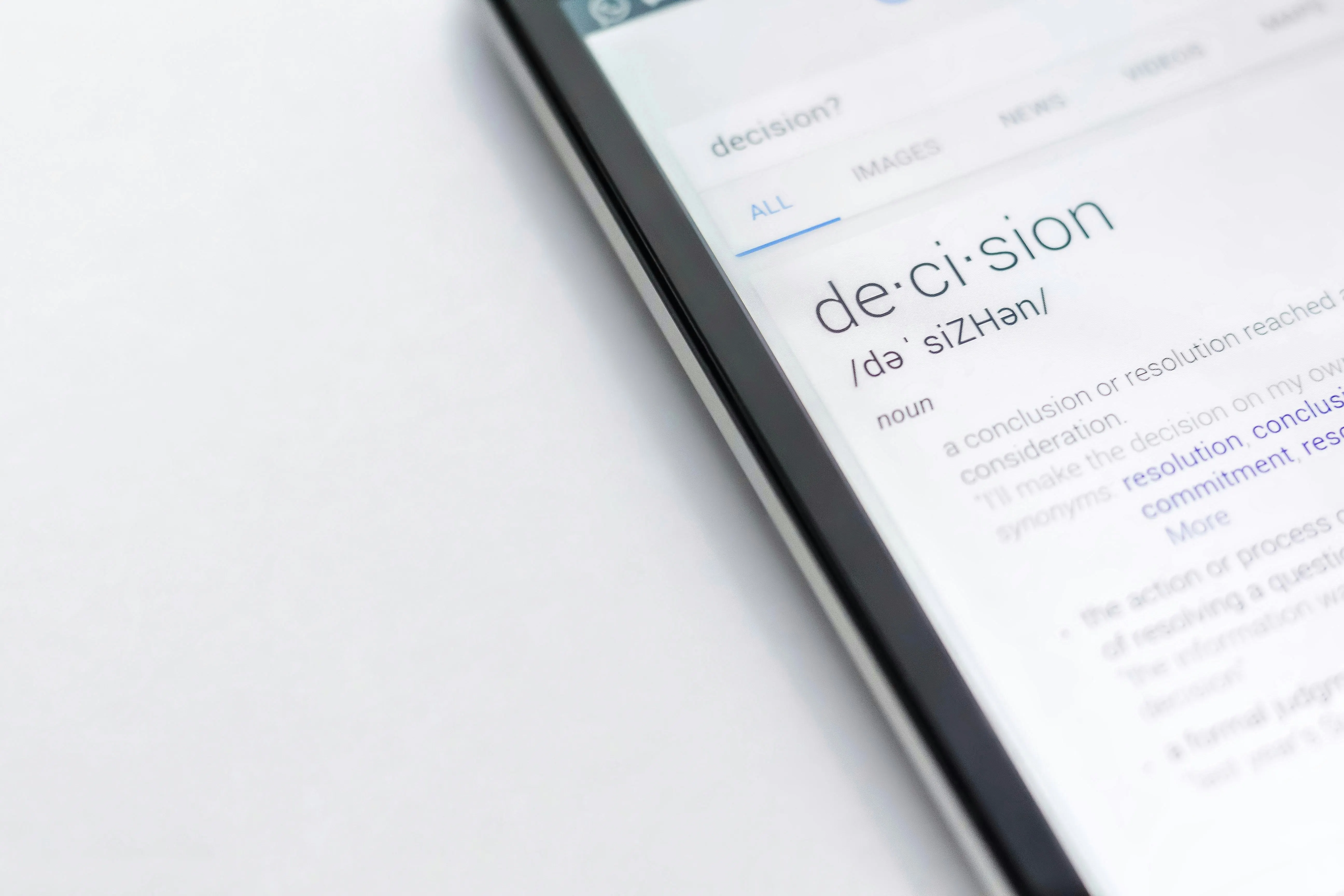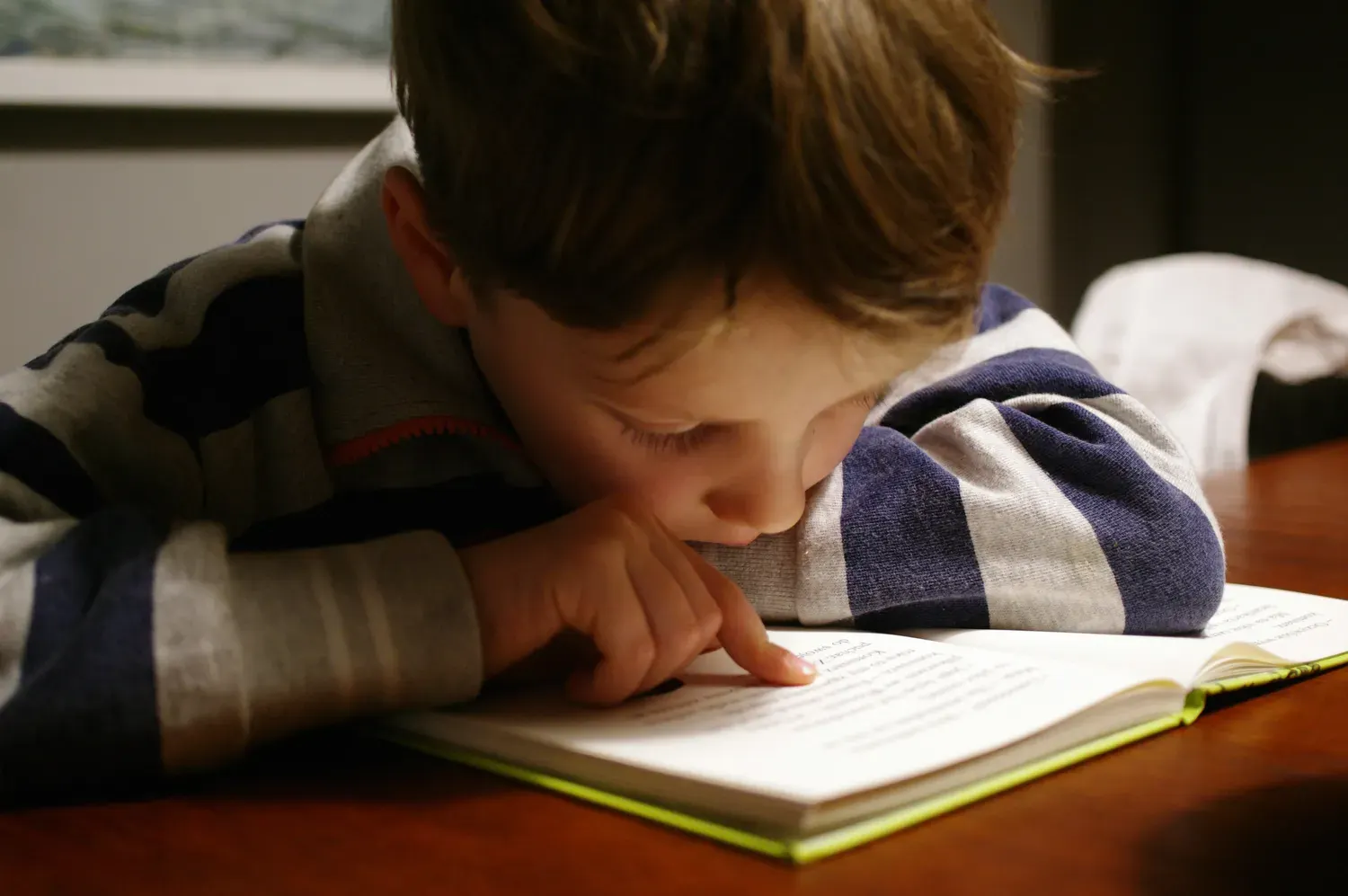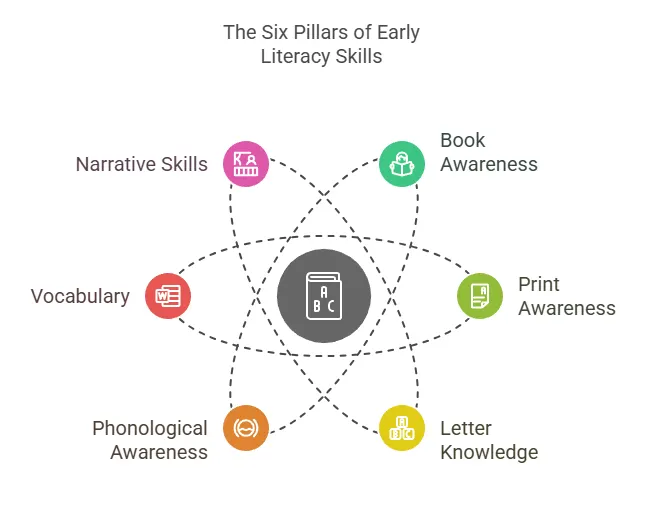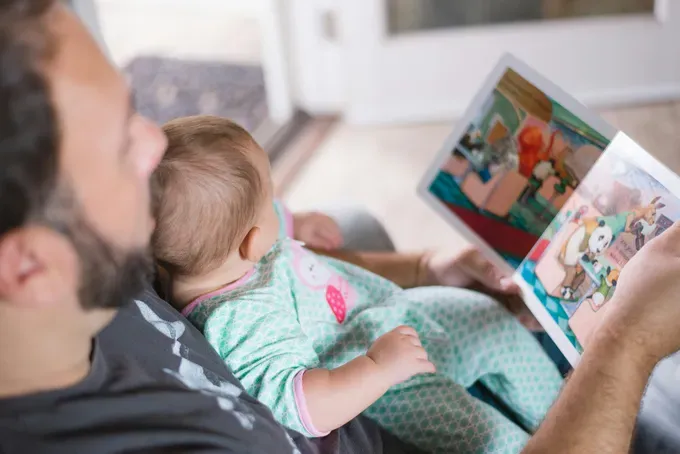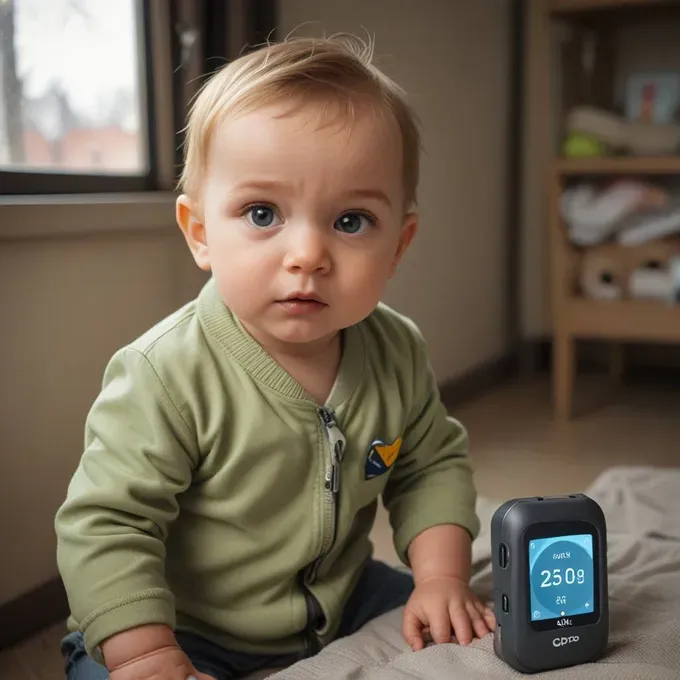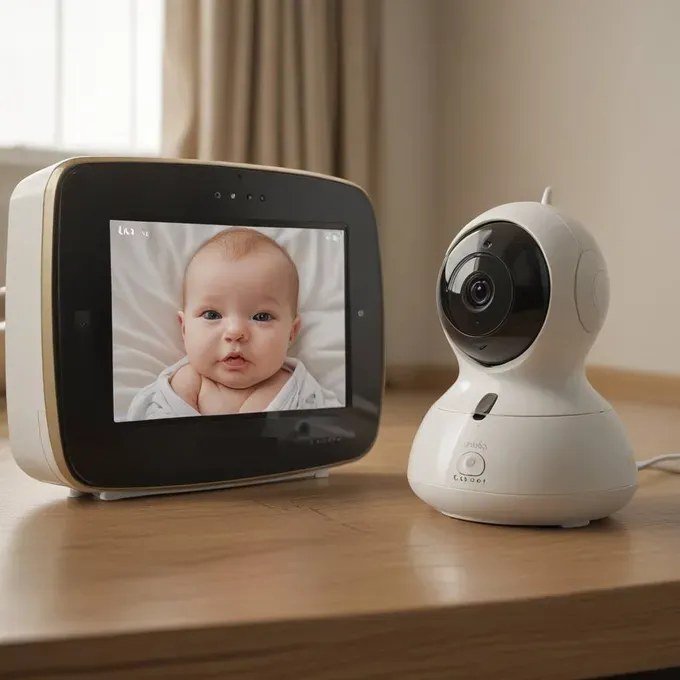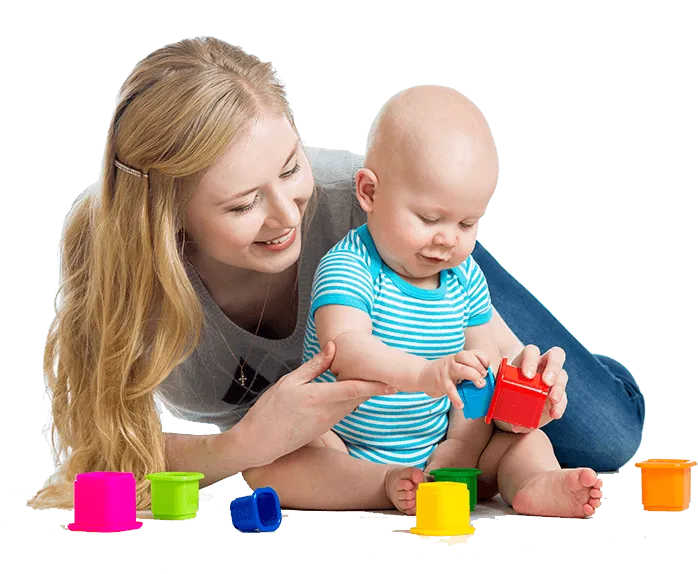Screen Time: How Much is Too Much? Find Out Here
Screen Time: How Much is Too Much? Expert Insights
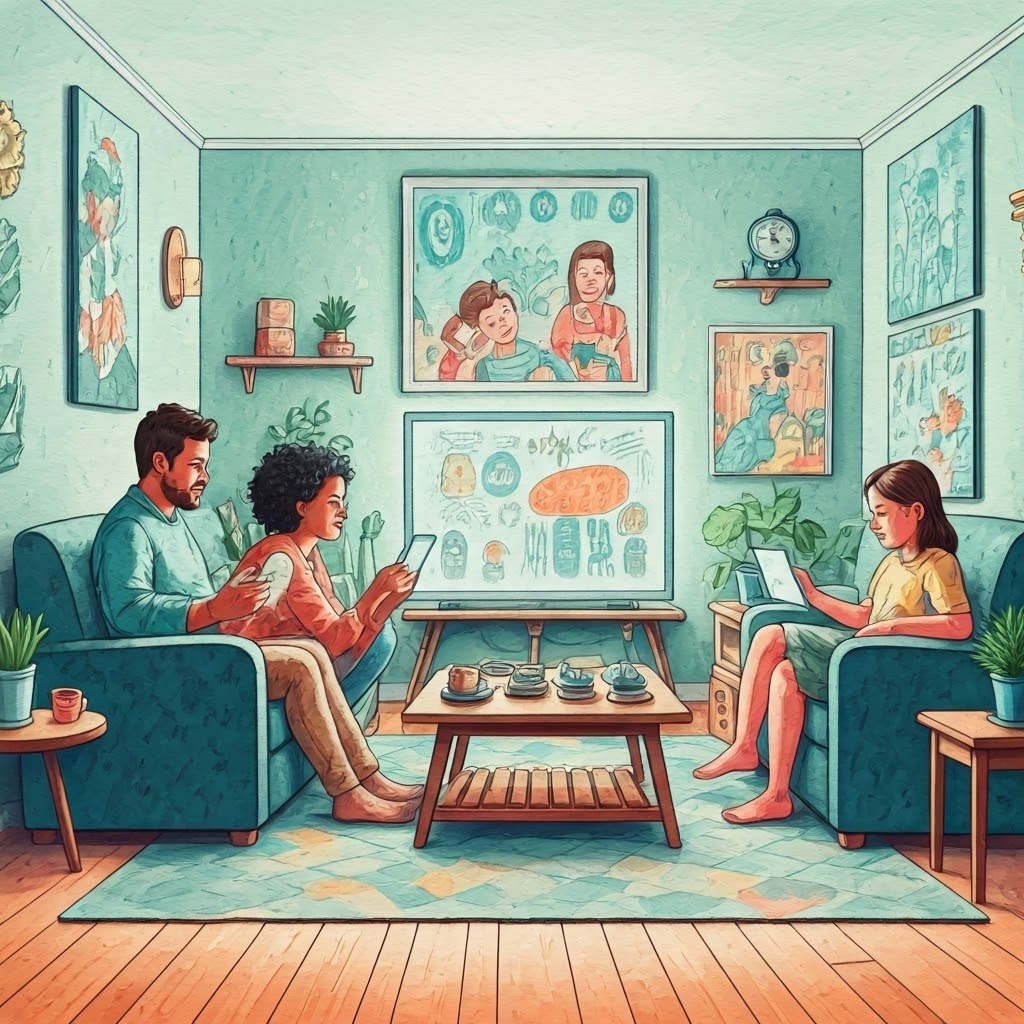
Key Highlights
- Excessive screen time can negatively impact children's physical and mental health, affecting sleep, weight, and social skills.
- The American Academy of Pediatrics provides screen time guidelines based on age, recommending minimal screen time for children under two.
- Balancing screen time with alternative activities like outdoor play, reading, and hobbies is crucial for healthy development.
- Utilizing parental control apps and establishing family media plans can aid in managing and monitoring children's screen usage.
- Open communication about online safety, appropriate content, and healthy tech habits is essential for navigating the digital world as a family.
Introduction
In today's world, many children spend time on screens. This can include watching TV, using tablets, or playing on mobile devices. While media use can be fun and sometimes teach valuable things, too much screen time can harm children's health and happiness. This blog post looks at the problems with excessive screen time. It also offers useful tips for parents. These tips will help children create healthy screen use habits.
Understanding Screen Time and Its Impact
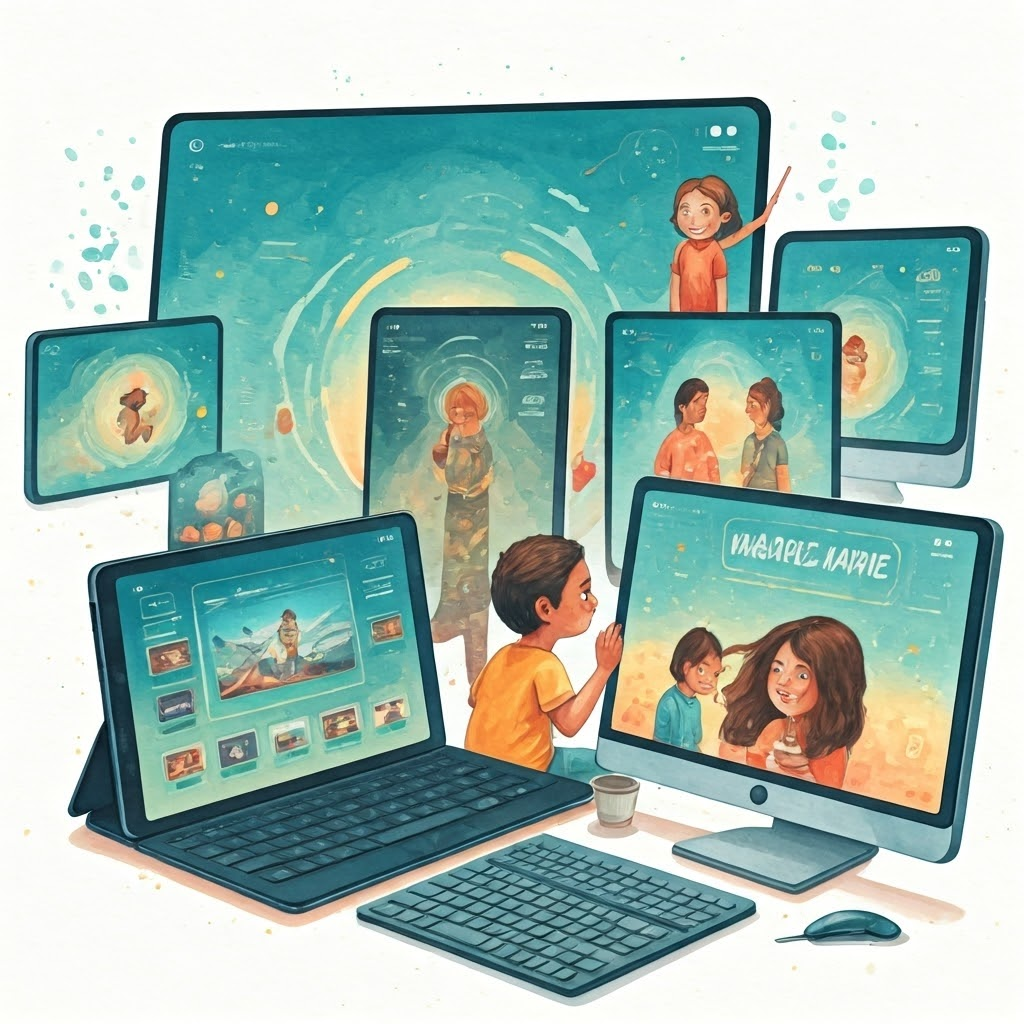 Understanding screen time and its effects is important for helping children develop good digital habits. Screen time means any time spent using devices that have screens, like TVs, computers, smartphones, tablets, and video games. These devices can provide benefits, such as educational content and entertainment. However, too much screen use can harm children's physical health, thinking skills, and emotions.
Understanding screen time and its effects is important for helping children develop good digital habits. Screen time means any time spent using devices that have screens, like TVs, computers, smartphones, tablets, and video games. These devices can provide benefits, such as educational content and entertainment. However, too much screen use can harm children's physical health, thinking skills, and emotions.
Parents need to pay attention to their children's screen time. By learning the pros and cons of screen use, parents can choose how their kids use technology wisely. It’s not about stopping screen time completely. It’s about finding a healthy balance that helps their overall well-being.
What Constitutes Screen Time in Today's Digital Age?
Gone are the days when children only watched cartoons on TV. Today, the digital world has grown, and kids see many more electronic devices and digital content. Screen time now includes watching videos on YouTube, using social media, and playing video games. All these activities add up to the time they spend in front of a screen.
With the rise of portable devices like smartphones and tablets, it's now easier for kids to access digital media all day. Whether at home, in the car, or at school, children have many chances for screen time. One recent study highlights that parents need to pay attention to and manage how long their kids spend using screens each day.
As technology changes, the idea of screen time will probably keep growing. What matters is that parents and caregivers recognize how common electronic devices are today and how they can interact with their children in real time. They should take active steps to make sure children's screen use stays within healthy limits.
Overview of Screen Time Effects on Different Age Groups
The effects of screen time can vary depending on a child's age and growth stage. Younger children, especially those under 24 months of age, are more at risk. Studies say that too much screen time during these early years can hurt language development, social skills, and thinking skills.
As children get older, worries about too much screen time change a bit. Language delays are still a problem. But now, attention issues, trouble with emotions, and a higher chance of obesity become bigger concerns. Older children and teenagers may also face more negative effects from social media, like cyberbullying and seeing content that's not suitable for them.
Most experts agree that we should limit screen time for all children, with stricter rules for younger kids. It’s important to find a good balance. Children need time for social interaction, physical activity, and creative play, too.
The Physical Effects of Excessive Screen Time
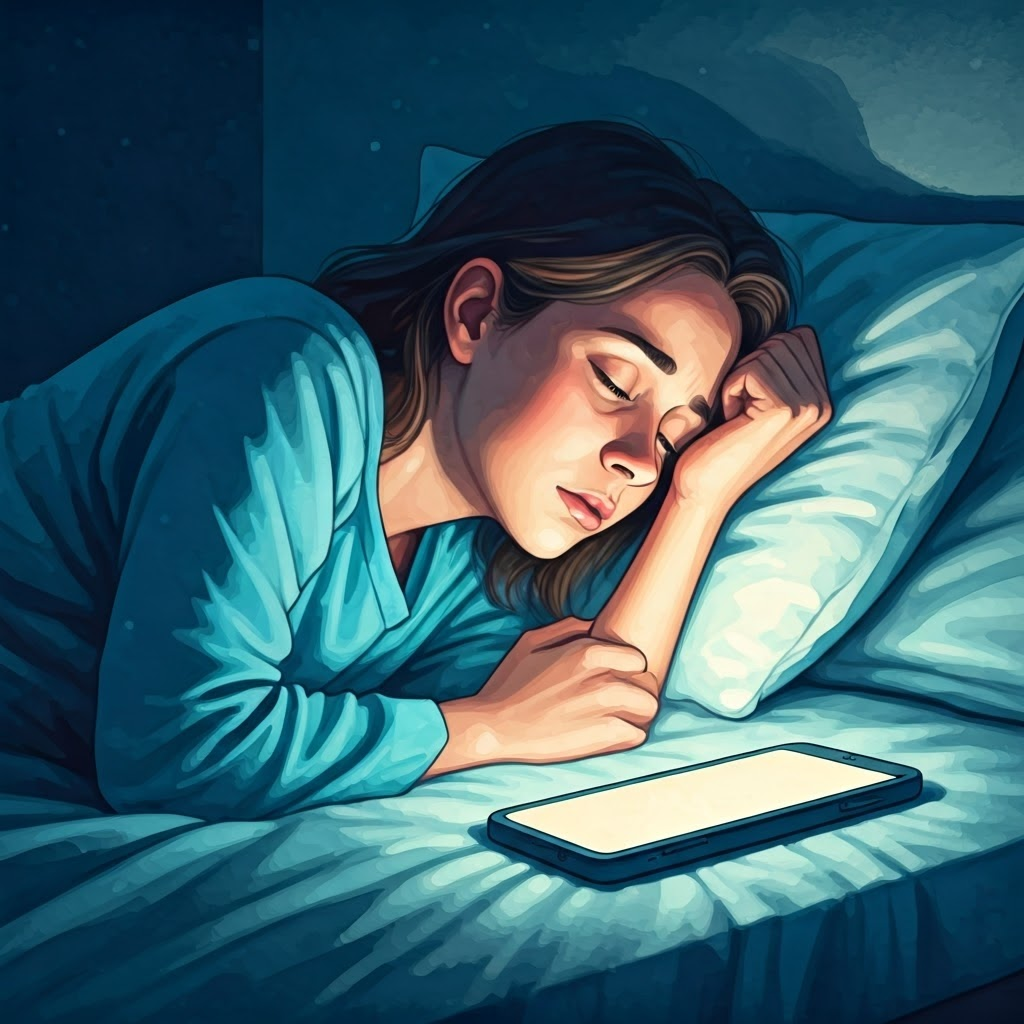
The appeal of screens can make children spend a lot of time sitting and focused on their digital games. This long time without physical activity, along with eating unhealthy snacks while on screens, can lead to health issues. Weight gain and childhood obesity are big problems.
Also, too much screen time, especially at night or before sleep, can affect melatonin levels. Melatonin is key to helping us sleep well. If melatonin is not at the right level, kids might have trouble falling asleep and may not sleep well, which can make them feel tired during the day. This can hurt a child’s overall health.
How Screen Time Affects Sleep Patterns
Adequate sleep is very important for children's health and their minds. When kids sleep, their bodies and brains do key things that help them grow, learn, and handle emotions. However, too much screen time, especially near bedtime, can really disturb their sleep. The blue light from electronic devices stops the body from making melatonin, which is a hormone that helps manage sleep patterns.
When kids see blue light in the evening, their brains can think it's still daytime. This makes it hard for them to fall asleep and stay asleep. This disruption can create a sleep deficit. Kids might feel irritable, struggle to concentrate, feel sleepy during the day, and even have issues at school.
It's important to focus on healthy sleep habits to lessen the bad effects of excessive screen time. This means setting a regular sleep schedule, having a relaxing bedtime routine, and making bedrooms free from screens to help encourage good sleep.
Eye Strain and Other Physical Health Concerns
Spending a lot of time looking at screens can hurt your eyes. This might cause discomfort and may lead to future vision issues. The muscles in the eyes keep working hard to focus on the screen, especially since devices like smartphones and tablets are so close. Also, the blue light from these devices can go deep into the eye and might harm the retina over time.
Signs of eye strain, or digital eye strain, include headaches, blurred vision, dry eyes, and pain in the neck and shoulders. It's important for everyone, especially kids who might not notice or express these symptoms, to take breaks from using screens. This gives their eyes time to rest and refocus.
Help children by encouraging them to hold devices further away. Also, lower the screen brightness and remind them to take regular breaks to look at things in the distance. Regular eye check-ups are also vital for keeping track of eye health and catching any vision problems early.
The Connection Between Screen Time and Physical Activity Levels
With video games, social media, and endless streaming content, kids are often spending less time in physical activity. This low movement, along with the chance for unhealthy snacking while using screens, has led to higher rates of childhood obesity and other weight problems.
When children are on screens for hours, they miss out on chances for active play, sports, and moving their bodies. Physical activity is important for kids. It helps build strong muscles and bones, improves heart health, and keeps a healthy weight. Also, regular exercise boosts brain function, emotional health, and sleep.
Encouraging kids to take part in physical activity should come first. This can mean limiting screen time, supporting outdoor play, and doing family activities that allow movement to enhance motor skills. Finding activities kids love, like sports, swimming, dancing, or just playing tag in the park, can help them enjoy moving even after childhood.
Cognitive and Psychological Impacts
 Excessive screen time can affect more than just the body. It can slow down how children's minds grow and may harm their mental health. The fast pace of digital media can make it hard for kids to pay attention. They might struggle to focus on things that need more time.
Excessive screen time can affect more than just the body. It can slow down how children's minds grow and may harm their mental health. The fast pace of digital media can make it hard for kids to pay attention. They might struggle to focus on things that need more time.
Also, too much screen time can lead to more mental health problems like anxiety and depression. When kids spend less time with others in person, it can hurt their self-esteem. Social media can also make them compare themselves to others, which can mess with how they feel.
Screen Time's Influence on Attention Spans and Learning
Some screen time can be good because it offers educational content and fun learning moments. However, too much screen time can hurt children's attention spans and make it hard for them to learn well. Fast-paced digital media with constant action and quick images can lead kids to expect immediate rewards.
This overload of information can make it difficult for some children to stay focused on tasks that need attention, such as reading, solving problems, or following instructions with multiple steps. Research shows a link between excessive screen time and shorter attention spans, especially in younger children whose brains are still growing.
To help children develop their attention skills, it is important to balance screen time with activities that encourage focus and concentration. Good activities to try include reading aloud, playing pretend, building with blocks, or doing puzzles and board games that require problem-solving.
The Role of Screen Time in Children’s Emotional Development
Excessive screen time, especially in young children, can affect their social skills and emotional growth. Interacting face-to-face helps children learn to read social signals, understand actions without words, and develop empathy. These are important skills for making healthy friendships.
When kids spend too much time on screens, they miss chances for real-life interactions. These interactions are key to building emotional understanding and social skills. Without practice in social situations, children may struggle with talking to others, working together, and solving conflicts. This can sometimes lead to social anxiety or behavioral problems.
It is important to encourage kids to do other activities instead of screens. Options like creative play, joining sports teams, or participating in group activities give children good chances to learn, practice, and improve their social and emotional skills.
Screen Time and Its Link to Anxiety and Depression
Many studies suggest there is a link between too much screen time and a higher chance of mental health problems, like anxiety and depression. This is especially true for teenagers and young adults. Constantly seeing idealized lives on social media can make people compare themselves to others. This often leads to feeling not good enough, low self-esteem, and body image issues.
Cyberbullying is another serious issue in today’s digital world. It can cause strong emotional harm and bad psychological effects for children and teenagers. The anonymity and fast spread of information make cyberbullying especially hurtful. It can lower self-esteem, affect mental health, and even lead some people to think about suicide.
Parents and teachers should talk openly about online safety and responsible media use. They must also encourage young people to ask for help if they face cyberbullying or have mental health problems. By keeping the lines of communication open and creating a safe space, we can help reduce the anxiety and depression linked to excessive screen use.
Screen Time Guidelines by Age
To deal with the problems caused by too much screen time, groups like the American Academy of Pediatrics (AAP) have made guidelines for different age groups. These suggestions focus on reducing screen time for little kids. They also encourage older children and teenagers to find a healthy mix of screen use and other activities.
The guidelines also talk about considering both the amount and the type of screen time. They encourage choosing content that is suitable for each age. It’s good to pick engaging and educational content when you can.
Recommendations for Infants and Toddlers
For babies and young children, the AAP says to avoid screen time except for video chats with family and friends. Studies show that too much screen time at this age can hurt language skills, thinking ability, and social-emotional growth.
Babies and toddlers do better with real-life interactions. They learn by exploring, touching, and using their senses. They pick up skills best through play, talking to people, and watching others in real life. If they spend too much time on screens, it can hold back their development and delay important milestones.
Instead of using screens, parents and caregivers should give babies and toddlers fun activities. These activities should help them use their senses, move around, and learn language. Great ideas include singing, reading together, playing with toys meant for their age, and enjoying the outdoors.
Guidelines for Preschoolers and School-Aged Children
For preschoolers who are 2 to 5 years old, the AAP suggests keeping screen time to one hour or less each day. They recommend watching high-quality shows together with a parent or family member, or caregiver. It’s important to talk about what you see on screen and relate it to real-life experiences.
For school-aged kids who are 6 years and older, it’s essential to set clear limits on media use. You should focus on choosing and watching age-appropriate content together. Make sure that screen time does not disrupt sleep, physical activity, or other important tasks like homework, hobbies, and spending time with friends.
Creating tech-free zones and times, like during family meals or before going to bed, can help kids take a break from screens. This encourages them to communicate face-to-face, relax, and enjoy quality time with their family.
Managing Screen Time for Teenagers
Teenagers today face special challenges with digital devices. They are very familiar with technology and often use many devices and social media. Instead of trying to stop all screen time, it's important to set realistic limits and encourage a good balance.
Talking openly with your teenager is crucial. Discuss healthy screen habits, how to use social media responsibly, and why real-life experiences matter more. Include them in deciding on screen time limits and making a family media plan.
Also, promote activities that keep them off screens and match their interests, like sports, music, art, volunteering, or hanging out with friends. The aim is not to make technology seem bad but to help teenagers create a healthy relationship with it.
Strategies to Balance Screen Time
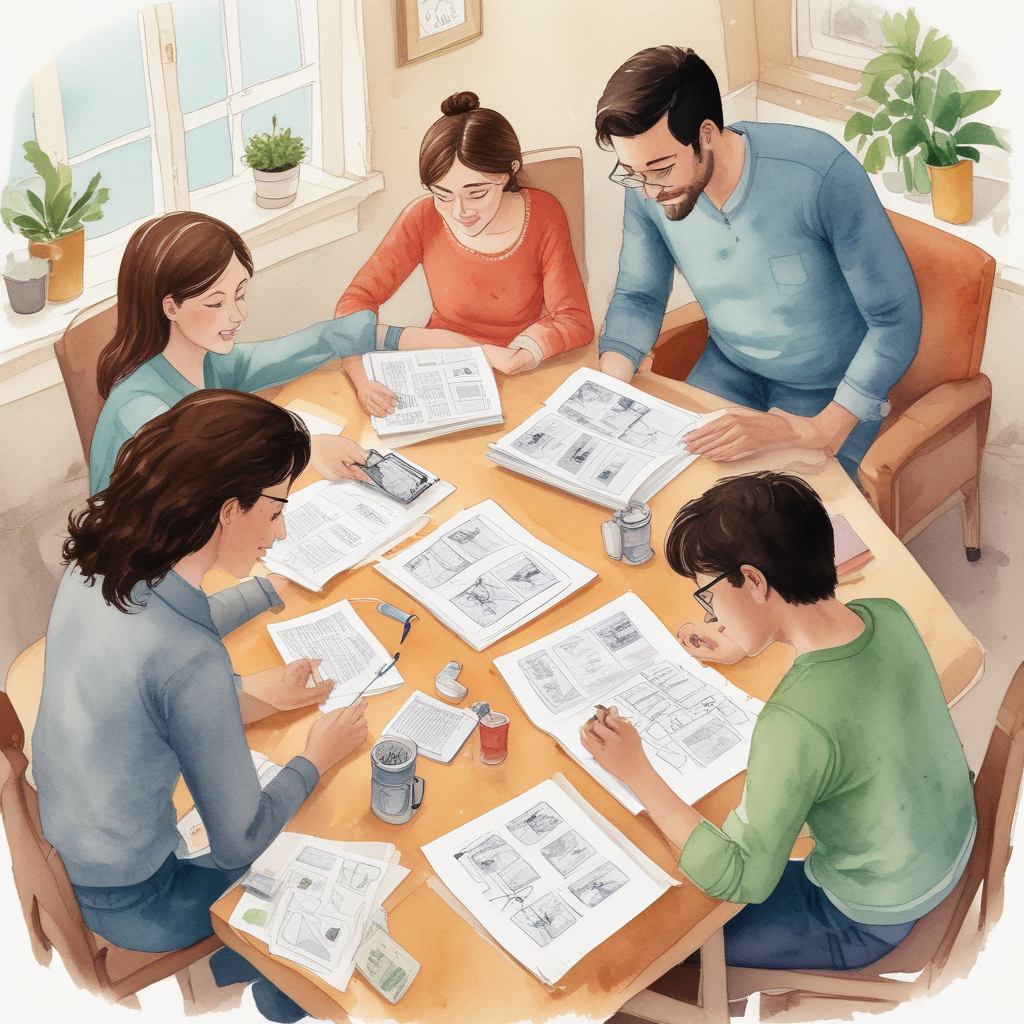 In today's world filled with technology, balancing screen time is important. This needs a well-rounded plan that includes clear rules, parent support, and other fun activities. Setting places and times without screens, like at the dinner table or one hour before sleep, can bring families closer together and give everyone some relaxation time.
In today's world filled with technology, balancing screen time is important. This needs a well-rounded plan that includes clear rules, parent support, and other fun activities. Setting places and times without screens, like at the dinner table or one hour before sleep, can bring families closer together and give everyone some relaxation time.
Encouraging kids to join in non-screen activities is useful. They can read, play outside, explore hobbies, and enjoy time with family. These activities help children discover their interests and build a healthier connection with technology.
Tips for Creating a Family Media Plan
A family media plan is a guide for using technology together. It helps everyone in the family have healthy screen habits. To create a plan, talk openly together and work as a team. Make sure to understand what everyone needs and prefers. Start by discussing how your family uses media, share any worries, and set realistic goals.
Next, find specific screen time limits that fit your family’s ages, schedules, and values. Set up tech-free zones in your home, like bedrooms and the dinner table. These areas encourage face-to-face conversations and help with good sleep. Also, choose tech-free times for things like family meals, playing outside, and reading together.
Keep in mind that being flexible and reviewing the plan often is important. As kids grow and technology changes, your family media plan should adjust too. Regularly look over and tweak the plan together to make sure it works for everyone.
Encouraging Alternative Activities to Reduce Screen Dependency
When kids spend too much time in the virtual world, we need to offer exciting activities that build creativity, learning, and real social interaction. It is important to encourage a variety of interests away from screens. This helps prevent screen dependency and supports a healthier lifestyle.
Support kids in exploring different hobbies and interests like art, music, sports, cooking, gardening, and coding. Sign them up for extracurricular activities that spark their curiosity. This lets them meet other kids who enjoy the same things. Plan family trips to parks, museums, libraries, and local events. These outings create great memories and give kids new experiences beyond screens.
Limiting recreational screen time opens up many chances for kids. They can use their senses, build needed skills, and grow their imaginations. The real world is full of adventure, learning, and connections, making it the best playground for children of all ages.
The Importance of Co-viewing and Participating with Children
In a world full of screens, families can easily drift apart. Each member can get lost in their own digital space. But using screen time as a way to share experiences can help keep families connected and create learning moments.
Co-viewing is a great way to watch shows or play games with your child. This lets you talk about the content. You can help them think critically and understand the media better. Ask questions that don't have simple answers, talk about tough choices, and connect what happens on screen to real-life situations.
Plus, co-viewing helps you keep an eye on what your child watches. You can make sure they are not seeing anything inappropriate. It gives you a chance to have educational screen time, too, by picking shows that encourage learning. By joining in on how your child uses screen time, you can turn it into an enjoyable and meaningful activity that benefits everyone.
Technological Tools and Apps to Monitor and Limit Screen Time
In this digital age, we have many tools to help us keep track of screen time. Parental control apps are easy to find for mobile devices and computers. They provide a good way to set screen time limits, block certain content, and track how much the device is used.
These apps help parents create healthy digital boundaries. This can help stop excessive screen time and encourage responsible use of technology. Organizations like Common Sense Media can help parents learn about these tools. It's important to talk with your child about these tools and explain why they are used. This builds understanding and cooperation between you and your child.
Review of Popular Parental Control Applications
With the overwhelming number of parental control applications available, choosing the right one for your family can feel daunting. Consider your family's specific needs, device compatibility, and desired features. Below is a simplified review of three popular options:

How Technology Can Help Manage and Schedule Screen Usage
Technology can often be seen as causing too much screen time. However, it can also help us manage and plan screen use better. By using technology wisely, parents can use its tools to encourage healthy screen use habits for their kids.
Many devices now have built-in features like screen time trackers and reports. These features give helpful information on how much time is spent on each app and website. Parents can use these tools to find out where they can reduce screen time and set limits.
Planning screen time ahead can bring structure and reduce arguments. Set specific times for educational screen time, fun shows, and social media. This way, the use of screens fits in with important activities in your child's daily life instead of taking over.

Conclusion
Taking care of your mental health is very important for your overall well-being. You can improve your mental health by keeping healthy habits, being careful about what you take in, doing activities that help you feel better, and having a positive mindset. It's also important to remember that getting professional help when you need it shows strength, not weakness. Make your mental health a priority, just like your physical health, because they are connected and both are important for a happy life.
Related Articles :
15 Minutes a Day: Simple Family Reading Rituals That Last
Nurturing Creativity in Early Childhood: A Complete Guide (Prenatal to Age 5)
Celebrating Events in Early Childhood: Nurturing Growth
Frequently Asked Questions
What is a Safe Amount of Screen Time for Children Under 5?
The American Academy of Pediatrics, along with the Canadian Paediatric Society, says that kids under 5 should have no more than one hour of screen time each day. This screen time should be high-quality programming. It’s best if a parent or caregiver watches with them.
How Can Parents Effectively Enforce Screen Time Rules?
To make screen time rules work well, sit down as a family and create a family media use plan. This plan should include clear rules and what happens if they are broken. It's important to stick to the rules and talk openly about them.
How much screen time is OK per day?
The amount of screen time you have each day can change based on your age. To ensure healthy screen use and prevent problematic screen use, focus on the quality of what you watch instead of how long you watch. Set limits for yourself. It's also important to show responsible own screen use.
Is 7 hours of screen time too much?
Yes, seven hours of screen time is too much. Too much screen time can lead to health problems. These include issues like sleep problems, weight gain, and worries about mental health.
How much screen time do you recommend?
We suggest you follow the American Academy of Pediatrics' advice for daily screen time. These guidelines change depending on the age of the child. Set clear screen time limits and focus on activities that do not involve screens.
When can screen time help?
Screen time can be good if it involves quality educational content, encourages interaction, and is used in a balanced way. Some apps and programs can help improve language skills and thinking abilities.
What are the screen time recommendations for children and teens?
Screen time rules change depending on how old kids are. Younger children have stricter limits. Check with the American Academy of Pediatrics for detailed guidelines that fit each age group.
What Does Too Much Screen Time Do to Children’s Brains?
Too much screen time can affect children's brains. It may impact their attention span, language development, and ability to manage emotions.
How to limit screen time. What qualifies as "educational" screen time?
Limit screen time by making clear rules and suggesting other fun activities. "Educational" screen time helps kids learn, encourages talking, and follows screen time rules.
Reference:
https://www.healthychildren.org/English/family-life/Media/Pages/Tips-for-Parents-Digital-Age.aspx
https://www.healthychildren.org/english/fmp/pages/mediaplan.aspx
https://www.ucsfbenioffchildrens.org/
https://www.ucsfbenioffchildrens.org/providers/dr-jason-nagata
https://pediatrics.aappublications.org/content/138/5/e20162591
https://pediatrics.aappublications.org/content/138/5/e20162592

Written with Augmented Intelligence and SHiNER The Human










